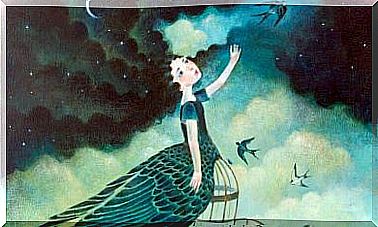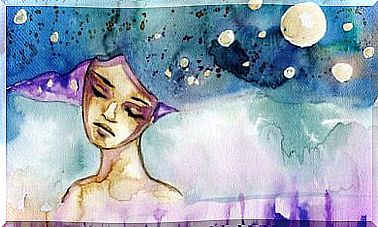Communitas: When Change Comes From The Irrational

Everyone who has ever been on a pilgrimage knows that it is something special, but perhaps they do not know what communitas is. Walking together with strangers and sharing a goal with them leads us to create special bonds. A destiny, a shared path, and an unexpected affinity build magic.
This phenomenon was studied by the anthropologist Victor Turner, who considered that pilgrimages were rituals that were divided into different phases. For him, pilgrimages consist of leaving society and returning, but on the way back, nothing is the same as before. For Turner, what mattered most was the community that was formed, the relationships so special that he called communitas.
Ritual Phases
Rituals consist of three different phases, connected to each other. These phases are separation, liminality and aggregation. In the first phase, that of separation, people separate from the social community. They abandon everyday life, both physically and symbolically.
On pilgrimages, this phase occurs when we pack our bags, say goodbye and seek information about the experience that is beginning, etc.

The second phase, that of liminality, is the realization of the path, the pilgrimage. At this stage, people move away from normal notions of time and space. Time passes in a different way. People stop looking at the clock constantly, walk more slowly enjoying the scenery, and the moment becomes more important than the future.
During this phase, a common reason is also shared with the other pilgrims, to finish the pilgrimage or reach the next point of the journey. This creates a common identity.
The last phase corresponds to aggregation. It’s the end of the pilgrimage. It’s time to go home to the usual routine. The path is over. However, nothing else is the same. Pilgrims usually come back more relaxed and acquire a new social status. Routine and tedious activities are seen differently. Small things become more important and relationships with other people become more pleasurable. What happened?
communitas
Of the three phases of rituals, the second, liminality, is the central, the most important. During this phase, something that happens causes us to change. Something changes our way of seeing and understanding the world, that is communitas.
During the liminality phase, prior social conditions do not exist. The norms and limitations that we have on a daily basis disappear, and we enjoy expanded freedom. Our social status doesn’t matter anymore. It doesn’t matter our work, our studies, or our religious beliefs. All pilgrims are on the same level, they are the same.
This anarchic state provides the emergence of communitas. Communitas, according to Turner, is a community spirit. It is a feeling of social equality, solidarity and union. In short, it is a human bond that is made up of non-rational egalitarian ties. The other pilgrims become our equals for no reason.
Even though in other situations they never got to be our friends, they become more than friends. No matter what we share, not outside of this precious moment of now.
Communitas is very intense. It causes us to make our senses more sensitive and our intuition more active. Emotions are on the surface and the rational loses its meaning. However, this state is temporary and doesn’t usually last long.
Furthermore, communitas can serve to destroy order. This state in which habitual social norms do not work can lead to a chaotic state in which destruction reigns. Conversely, communitas can also lead to creation. This state can act as an aid to generate new norms and values, as well as helping us to recover lost values.

Types of communities
Turner distinguished between three different types of communitas: the existential or spontaneous communitas, the normative communitas, and the ideological communitas.
Spontaneous communitas appears when a countercultural event occurs. When you participate in an event whose norms are in line with current culture. Normative communitas occurs when there is a need for social control. This type of communitas originates from spontaneous communitas, and pilgrimages belong to this type. Finally, the ideological communitas is found in utopian societies. People share certain ideals, a utopia.
While spontaneous communitas takes place outside social norms, the social structure, the normative and ideological are within the social structure. Therefore, the spontaneous is the freest, the one that provides the most changes.
In short, voluntarily leaving the place of residence, crossing new borders and passing through states never before experienced leads us to communitas, something that overcomes the division between people and leads to social unification. If you’ve had such an experience, you already know what to call it. If, on the contrary, you haven’t tried it yet, what are you waiting for?









